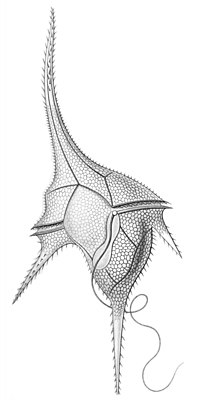
Photo from wikipedia
Abstract The comprehension of microbial interactions is one of the key challenges in marine microbial ecology. This study focused on exploring chemical interactions between the toxic dinoflagellate Prorocentrum lima and… Click to show full abstract
Abstract The comprehension of microbial interactions is one of the key challenges in marine microbial ecology. This study focused on exploring chemical interactions between the toxic dinoflagellate Prorocentrum lima and a filamentous fungal species, Aspergillus pseudoglaucus, which has been isolated from the microalgal culture. Such interspecies interactions are expected to occur even though they were rarely studied. Here, a co‐culture system was designed in a dedicated microscale marine‐like condition. This system allowed to explore microalgal–fungal physical and metabolic interactions in presence and absence of the bacterial consortium. Microscopic observation showed an unusual physical contact between the fungal mycelium and dinoflagellate cells. To delineate specialized metabolome alterations during microalgal–fungal co‐culture metabolomes were monitored by high‐performance liquid chromatography coupled to high‐resolution mass spectrometry. In‐depth multivariate statistical analysis using dedicated approaches highlighted (1) the metabolic alterations associated with microalgal–fungal co‐culture, and (2) the impact of associated bacteria in microalgal metabolome response to fungal interaction. Unfortunately, only a very low number of highlighted features were fully characterized. However, an up‐regulation of the dinoflagellate toxins okadaic acid and dinophysistoxin 1 was observed during co‐culture in supernatants. Such results highlight the importance to consider microalgal–fungal interactions in the study of parameters regulating toxin production.
Journal Title: Environmental Microbiology
Year Published: 2022
Link to full text (if available)
Share on Social Media: Sign Up to like & get
recommendations!